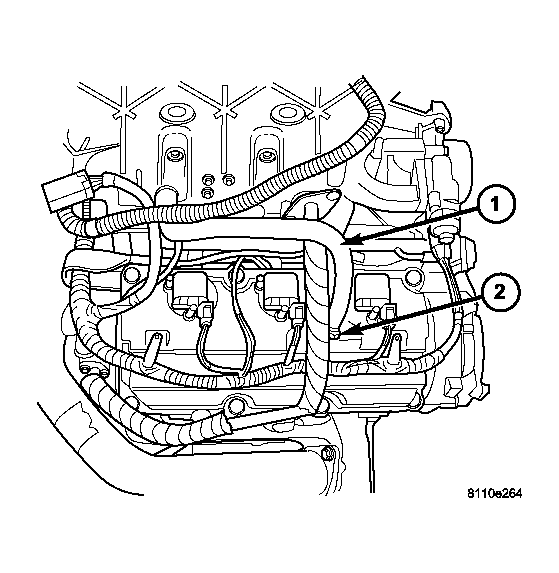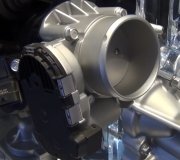DIAGNOSIS AND TESTING
DIAGNOSIS AND TESTING - PCV SYSTEM
1. With engine idling, remove the hose from the PCV valve. If the valve is not plugged, a hissing
noise will be heard as air passes through the valve. A strong vacuum should also be felt when a
finger is placed over the valve inlet.
2. Install hose on PCV valve. Remove the make-up air hose from the air plenum at the rear of the
engine. Hold a piece of stiff paper (parts tag) loosely over the end of the make-up air hose.
3. After allowing approximately one minute for crankcase pressure to reduce, the paper should
draw up against the hose with noticeable force. If the engine does not draw the paper against
the grommet after installing a new valve, replace the PCV valve hose.
4. Turn the engine off. Remove the PCV valve from intake manifold. The valve should rattle
when shaken.
5. Replace the PCV valve and retest the system if it does not operate as described in the preceding
tests. Do not attempt to clean the old PCV valve.
REMOVAL
Fig. 14: PCV VALVE AND HOSE
Courtesy of DAIMLERCHRYSLER CORP.
1. Remove hose from PCV valve. The valve is on the rear valve cover. See Fig. 14.
2. Unscrew the PCV valve.
3. Remove PCV valve.
INSTALLATION
Fig. 15: PCV VALVE AND HOSE
Courtesy of DAIMLERCHRYSLER CORP.
1. Install PCV valve and tighten. See Fig. 15.
2. Install PCV hose.
WARNING: APPLY PARKING BRAKE AND/OR BLOCK WHEELS BEFORE
PERFORMING ANY TEST OR ADJUSTMENT WITH THE ENGINE
OPERATING.
1 - PCV Hose
2 - PCV valve
1 - PCV Hose
2 - PCV valve
Image (Click to make bigger)
SPONSORED LINKS
Thursday, December 30th, 2010 AT 1:28 AM




